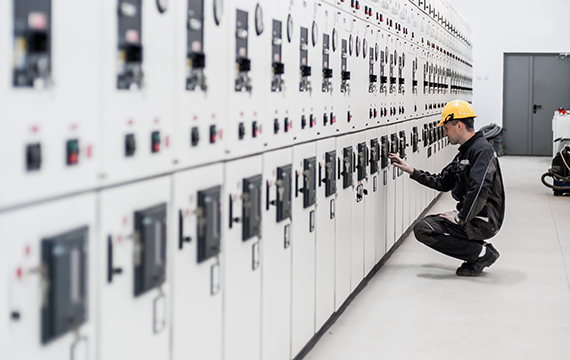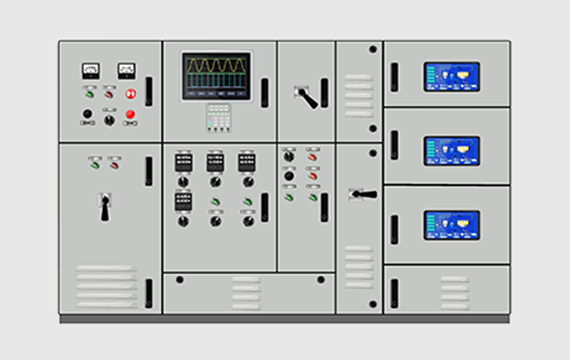LV, MV and HV Switchgear: A Complete Guide
Electrical power is the lifeblood of modern society, fueling everything from our homes to vast industrial complexes. But behind every flick of a light switch and hum of machinery lies a complex network of equipment designed to control, protect, and distribute that power safely and efficiently. At the heart of this network are switchgear systems.This guide will demystify low voltage (LV), medium voltage (MV), and high voltage (HV) switchgear, providing a comprehensive overview of their purpose, applications, types, and essential components. Whether you’re an industry professional, a student, or simply curious about how electricity is managed, you’ll gain valuable insights into these critical electrical systems.
1. Introduction to Electrical Switchgear
1.1 What is Switchgear?
Switchgear is a broad term that refers to the combination of electrical disconnect switches, fuses, and circuit breakers used to control, protect, and isolate electrical equipment. It’s essentially the nerve center of an electrical power system, allowing operators to safely manage power flow, isolate faults, and perform maintenance without interrupting the entire system.
1.2 Why is Switchgear Essential?
- Protection: It protects electrical equipment and personnel from damage caused by overcurrents, short circuits, and other electrical faults.
- Control: It allows for the safe switching and isolation of electrical circuits, enabling maintenance, repairs, and system reconfigurations.
- Reliability: By quickly isolating faults, switchgear helps maintain the continuity of power supply to unaffected parts of the system, improving overall reliability.
- Safety: It provides a safe working environment for personnel by ensuring that equipment can be de-energized and locked out during maintenance.
2. Understanding Voltage Classifications: LV, MV, and HV
The primary way switchgear is categorized is by the voltage level it operates at. While specific definitions can vary slightly depending on regional standards (e.g., IEC vs. ANSI/IEEE), here are the generally accepted LV, MV, HV voltage ranges:
- Low Voltage (LV) Switchgear: Typically operates at voltages up to 1,000 Volts (1 kV). This includes common household and light commercial applications.
- Medium Voltage (MV) Switchgear: Generally handles voltages between 1 kV and 36 kV (or sometimes up to 72.5 kV in some standards). This range is common in industrial plants, larger commercial buildings, and utility distribution networks.
- High Voltage (HV) Switchgear: Designed for voltages above 36 kV, extending into hundreds of kilovolts. This is primarily used in transmission substations and large power generation facilities.
3. LV Switchgear
3.1 Purpose and Applications
LV switchgear is the most common type of switchgear, found in nearly every electrical installation. Its primary purpose is to protect and control electrical circuits operating at low voltages.
- Residential buildings
- Commercial offices and retail spaces
- Small and medium-sized industrial facilities
- Motor control centers (MCCs)
- Lighting control panels
3.2 Key Components of LV Switchgear
- Circuit Breakers: Devices that automatically trip and interrupt an electrical circuit during an overcurrent or short circuit. Common types include miniature circuit breakers (MCBs), molded case circuit breakers (MCCBs), and air circuit breakers (ACBs).
- Fuses: Overcurrent protection devices that melt and break the circuit when current exceeds a safe level.
- Switches: Manual or automatic devices used to open or close an electrical circuit.
- Relays: Electrical switches that open or close circuits electromechanically or electronically, often used for protection and control functions.
- Busbars: Metallic strips or bars that conduct electricity within the switchgear, distributing power to various components.
- Metering and Monitoring Devices: Instruments like voltmeters, ammeters, and energy meters to measure and monitor electrical parameters.
3.3 Types of LV Switchgear Assemblies
- Distribution Boards/Panelboards: Enclosures containing MCBs, RCDs (Residual Current Devices), and other protective devices for distributing power within a building.
- Motor Control Centers (MCCs): Centralized assemblies for controlling and protecting electric motors.
- Switchboards: Larger assemblies often found in commercial and industrial settings, providing centralized control and protection for power distribution.
4. MV Switchgear
4.1 Role and Applications
MV switchgear plays a critical role in distributing power from substations to various industrial, commercial, and utility loads. It bridges the gap between high-voltage transmission and low-voltage consumption.
- Utility distribution networks
- Large industrial plants (e.g., manufacturing, mining, chemical)
- Power generation plants (auxiliary systems)
- Commercial buildings (e.g., hospitals, universities, data centers)
- Renewable energy installations (e.g., wind farms, solar farms)
4.2 Types of MV Switchgear
- Air-Insulated Switchgear (AIS): Uses air as the primary insulating medium. Often more robust and easier to maintain but requires more space.
- Gas-Insulated Switchgear (GIS): Uses sulfur hexafluoride (SF6) gas as the insulating medium. More compact and suitable for space-constrained environments, offering superior insulation properties.
- Vacuum Switchgear: Utilizes a vacuum interrupter for arc quenching, known for its longevity and low maintenance. Often found in both AIS and GIS designs.
- Solid-Insulated Switchgear (SIS): Employs solid dielectric materials for insulation, offering a compact and environmentally friendly solution.
4.3 Key Components of MV Switchgear
- Circuit Breakers: Vacuum circuit breakers (VCBs) and SF6 circuit breakers are common for MV applications due to their efficient arc quenching capabilities.
- Disconnect Switches/Isolators: Used to physically isolate sections of a circuit for maintenance, ensuring safety.
- Earthing Switches: Used to ground de-energized circuits for safety during maintenance.
- Current Transformers (CTs) and Potential Transformers (PTs): Used to step down high currents and voltages to measurable levels for metering and protection relays.
- Relays: Advanced protective relays provide sophisticated fault detection and protection schemes.
- Busbars: Robust conductors designed to handle higher voltages and currents.
5. HV Switchgear
5.1 Significance and Applications
HV switchgear is the backbone of long-distance power transmission. It’s designed to handle extremely high voltages and currents, ensuring the stable and reliable operation of national and regional power grids.
- Transmission substations
- Large power generation plants (e.g., thermal, hydroelectric, nuclear)
- Interconnections between different power grids
- Ultra-high voltage (UHV) transmission lines
5.2 Types of HV Switchgear
- Air-Insulated Switchgear (AIS): Predominantly used in open-air substations where space is not a major constraint. These systems are visually imposing with their large insulators and exposed conductors.
- Gas-Insulated Switchgear (GIS): Increasingly popular for HV applications, especially in urban areas or where space is limited. The encapsulated design offers excellent reliability and safety.
5.3 Key Components of HV Switchgear
- Circuit Breakers: Primarily SF6 circuit breakers are used due to their superior arc extinguishing properties at high voltages.
- Disconnect Switches/Isolators: Robust devices designed to isolate circuits under high voltage conditions.
- Earthing Switches: Essential for safely grounding lines and equipment after disconnection.
- Current Transformers (CTs) and Potential Transformers (PTs): Crucial for accurate measurement and protection at transmission voltage levels.
- Surge Arresters: Protect equipment from lightning strikes and switching surges.
- Control and Protection Panels: Sophisticated systems housing relays, control circuitry, and communication equipment for remote operation and monitoring.
- High Voltage Transformer: Often associated with HV switchgear in substations, stepping up or stepping down voltages for transmission or distribution.
6. Conclusion
LV, MV, and HV switchgear are indispensable components of any electrical power system. From protecting our homes to ensuring the stability of national grids, these systems are vital for the safe, reliable, and efficient control and distribution of electricity. Understanding the distinctions and complexities of switchgear types by voltage level is crucial for anyone involved in electrical engineering, power distribution, or industrial operations.
As a leading electrical switchgear manufacturer, Byyou Electric specializes in providing high-quality and reliable switchgear solutions across all voltage ranges. We offer a comprehensive range of products, including custom medium voltage & high voltage switchgear, designed to meet the diverse needs of various industries. Our commitment is to deliver cutting-edge technology and exceptional value, helping our clients maintain robust and efficient electrical infrastructure.








